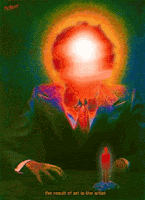Continuity editing uses a guideline called the "30-degree rule" to avoid the appearance of jump cuts. The 30-degree rule advises that for consecutive shots to appear seamless and continuous in time, the camera position must vary at least 30 degrees from its previous position. Some schools would call for a change in framing as well (e.g., from a medium shot to a close up). The idea is to convey to the viewer a different point of view on the action but with the timeline of the action being continuous. Generally, if the camera position changes less than 30 degrees, the difference between the two shots will not be substantial enough, and the viewer will experience the edit as a jump in the position of the subject rather than a change of point of view, which is jarring. Jump cuts, on the other hand, keep the camera's relationship to the subject the same but jump forward in time in the action. Although jump cuts can be created through the editing together of two shots filmed non-continuously (spatial jump cuts), they can also be created by removing a middle section of one continuously filmed shot (temporal jump cuts). Jump cuts can add a sense of speed to the sequence of events.














































